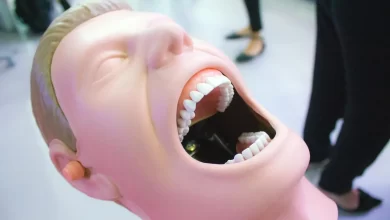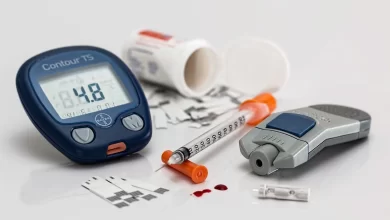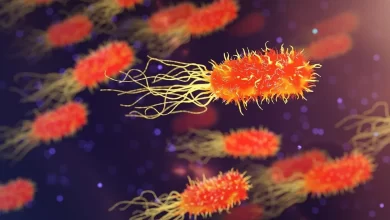DNA is the genetic material that carries the instructions for the function and development of all living organisms. It is a double-stranded molecule, shaped like a twisted ladder or a double helix, composed of nucleotides. Each rung of the ladder is made up of a pair of nucleotides, one from each strand, connected by a chemical bond. The nucleotides consist of a sugar molecule, a phosphate group, and a nitrogenous base. The four types of nitrogenous bases found in DNA are adenine (A), thymine (T), cytosine (C), and guanine (G). The specific sequence of these bases, known as the DNA code, determines the characteristics and traits of an organism. The DNA code is passed on from parent to offspring during reproduction, allowing for the continuation of genetic information from one generation to the next.
- DNA stands for deoxyribonucleic acid, which is a molecule inside cells that contains genetic information for the development and function of all living organisms present on earth.
- Swiss chemist Friedrich Miescher discovered DNA in the late 1860s. The structure of DNA was first described by James Watson and Francis Crick in 1953, for which they were awarded the Nobel Prize in Physiology or Medicine in 1962.
- The rungs of the ladder are made up of a pair of nucleotides, one from each strand, connected by a chemical bond.
- The nucleotides consist of a sugar molecule, a phosphate group, and a nitrogenous base.
- The four types of nitrogenous bases found in DNA are adenine (A), thymine (T), cytosine (C), and guanine (G).
- The specific sequence of these bases, known as the DNA code, determines the characteristics and traits of an organism.
- The DNA code is passed on from parent to offspring during reproduction, allowing for the continuation of genetic information from one generation to the next.
- DNA is organized in structures called chromosomes, which are located in the nucleus of a cell.
- In most organisms, DNA is packaged with proteins to form chromatin, which makes the DNA more compact.
- The human genome, the complete set of genetic instructions found in a human cell, contains about 3.2 billion base pairs of DNA.
- A diploid genome can store 1.5 gigabytes of data when converted to digital media. Consider that the human body is made up of 100 billion cells! Because DNA can encode two bits per nucleotide, one gram of dried DNA can store 455 exabytes of data (One exabyte = One billion gigabytes).
- DNA replication, the process of copying the DNA before cell division, is a semi-conservative process, meaning that each strand of the original DNA molecule serves as a template for the synthesis of a new complementary strand.
- DNA can be found in large quantities in human blood. Human white blood cells contain DNA but not red blood cells, which lack nuclei. A typical VNTR (Variable Number Tandem Repeat) analysis requires a dime-sized spot of blood, approximately 50 µl in volume.
- Mutations, or changes in the DNA code, can occur naturally or as a result of environmental factors such as radiation or chemicals. Certain mutations can result in genetic disorders or cancer.
- DNA sequencing is the process of determining the order of the nucleotides in a DNA molecule. Advances in DNA sequencing technology have led to new understandings of genetics and disease.
- DNA is made up of two complementary strands that run in opposite directions, the so-called 5′ to 3′ direction.
- The base pairing between the strands, A with T and C with G, is responsible for the stability of the DNA molecule and the accuracy of DNA replication and transcription.
- RNA (ribonucleic acid) is similar to DNA, but it is a single-stranded molecule, and it contains a different sugar (ribose) and a different base (uracil instead of thymine). The coronavirus is an RNA virus.
- RNA plays a key role in the transfer of genetic information from DNA to the synthesis of proteins.
- The genetic information in DNA is first transcribed into RNA and then translated into proteins by the ribosomes.
- The process of DNA repair is essential to maintain the integrity of the genetic material and prevent mutations.
- The study of DNA and genetics has a wide range of applications, including forensic science, medicine, agriculture, and biotechnology.
- DNA nanotechnology is a rapidly growing field that uses the specific properties of DNA to create complex nanoscale structures with potential applications in medicine, electronics, and computing.
- If you stretched the DNA in one cell all the way out, it would be about 2m long, and the DNA in all of your cells combined would be roughly twice the diameter of the Solar System.






